The Best of 1985
The year the mainstream went knee deep in the hoopla while the underground saw a new day rising.
It was the era of massive reverb, big snares, and synths. So. Many. Synths.
TV and Film
The Dukes of Hazzard aired its final episode in February, and Miami Vice was quickly becoming the hottest show on TV. By 1985, it was obvious that the zeitgeist had shifted from good ol’ boys in a modified Dodge Charger yee-hawing through the backroads of a fictional county in Georgia to the slick and stylish MTV-inspired adventures of two vice cops cruising through Miami—on land and by sea—and taking down high-profile drug dealers. We’d gone from the aw-shucks outlaw wink of Waylon Jennings to the glamorous jazz-prog of Jan Hammer.
It was also the year The Golden Girls premiered, featuring a trio of old ladies living together and the hilarity that ensued. (How old were those old ladies, you ask? The characters Dorothy and Blanche were supposed to be around 53, while Rose was around 55. Feel old yet?)
On the big screen, Marty McFly drove his cocaine-fueled DeLorean back to 1955 and culturally appropriated Chuck Berry’s “Johnny B. Goode” three years before it was released. (If the movie came out today, Marty would head back to when “Gangsta’s Paradise” was the biggest hit of the year. Feel old yet?) John Hughes gifted us the Gen-X classic, The Breakfast Club, while The Goonies expanded the imaginations of kids nationwide. Stallone gave us both Rambo II and Rocky IV. It was also the year of The Color Purple and Cocoon. (Fun fact: Wilford Brimley turned 50 during the filming of a movie about old people trying to find the secret to eternal youth. Feel old YET?)
The Music
For years, I argued that 1985-86 was the musical nadir of the decade. While 1984 had completely shaken off the residue of the ‘70s, its music looked ahead to exciting possibilities while holding on to what had worked in the past. By 1987, more organic, roots-based sounds had returned to the country, rock, and even pop charts, while hip-hop had grown into its own powerful and viable commercial entity. The two years in between, however, I once believed encapsulated the absolute peak of stuck-in-time, bandwagon-jumping, cold, digital, synth-driven studio tomfoolery. While there were exceptions, to me, they merely proved the rule.
In preparing this piece, however, I believe I’ve had a slight change of heart. After all, there were numerous great pop moments in 1985, as the Mixtape below illustrates. From the fun, Motown throwback of Katrina and the Waves to the hypnotic, sweeping atmosphere of Mr. Mister, there were plenty of diamonds scattered among the rough. And the rough might not have been quite as rough as I remember. Call it the hazy rose-colored lens of nostalgia if you will. Maybe my cynicism has subsided somewhat.
That said, there was still quite a bit of dreck littering the airwaves (it was the year of “We Built This City,”1 after all), but I guess no more than any other year or era. Besides, for every electronic drum fill and slapped bass on the radio, the wild underground and college rock scenes were inching closer and closer to mainstream success. The ones that didn’t were held onto like precious artifacts by fans who valued keeping those acts to themselves while bemoaning their lack of commercial success, yet crying “sell-out” once they broke through—the paradox of the music snob.
There was also a lot of music-centered news happening in 1985: VH1 debuted; two huge concert benefits took place; two high-profile charity singles focused on human rights and hunger in Africa; and in the midst of it all, a bizarre attempt to return to the puritanism of the original settlers. And it all peaked with…
The Shenanigans of the Parents Music Resource Center (PMRC)
Thanks to Tipper Gore overhearing her daughter’s copy of Purple Rain, most notably “Darling Nikki,” the wife of then-Senator Al Gore spearheaded a crusade to clean up the music business. Hearings were held. Drama was had. Snark was hurled. Feelings we hurt. Songs were misinterpreted. Warning labels were ultimately issued.
After several record labels acquiesced to placing “Parental Guidance: Explicit Content” on albums the PMRC deemed offensive, the Senate agreed to hold hearings on the matter. In September of 1985, three artists—Frank Zappa, Dee Snider, and John Denver—testified in opposition to these warning stickers.
The PMRC essentially won the battle, but maybe lost the war. Albums with warning labels saw increased sales and at least piqued curiosity, and Tipper Gore became the target of many songs that transcended genre. In 1985, there was still somewhat of a cultural divide between rock and rap, but the fight against the PMRC united both.
That November, Zappa also confronted the issue head-on, just as he had done before Congress, with “Porn Wars,” from Frank Zappa Meets the Mothers of Prevention, which included audio extracted from the hearings.
To bring it all full circle, here’s Zappa with Crockett and Tubbs:
The Filthy Fifteen
The main focus of the PMRC’s outrage centered around the so-called “Filthy Fifteen,” 15 songs that, to quote George Carlin’s line about the harm the “Seven Dirty Words” may cause, “will infect your soul, curve your spine, and keep the country from winning the war.” And indeed, the “Filthy Fifteen” was the ‘80s version of the “Seven Dirty Words” of the ‘70s. New decade, same fear.
In case you’re curious, these were deemed the so-called “Filthy Fifteen”:
1 Prince - "Darling Nikki"
2 Sheena Easton - "Sugar Walls"
3 Judas Priest - "Eat Me Alive"
4 Vanity - "Strap On 'Robbie Baby'"
5 Mötley Crüe - "Bastard"
6 AC/DC - "Let Me Put My Love into You"
7 Twisted Sister - "We're Not Gonna Take It"
8 Madonna - "Dress You Up"
9 W.A.S.P. - "Animal (F**k Like a Beast)"
10 Def Leppard - "High 'n' Dry (Saturday Night)"
11 Mercyful Fate - "Into the Coven"
12 Black Sabbath - "Trashed"2
13 Mary Jane Girls - "In My House"
14 Venom - "Possessed"
15 Cyndi Lauper - "She Bop"
Although most of those songs were placed on the list because of all the sex and violence and drinkin’ and smokin’ and cussin’, a couple dealt with what the PMRC labeled “The Occult,” because, y’all, we were in the midst of a…
Satanic Panic
Around 1984-85, when I was 15 or so, a friend had a cassette of some religious guy playing rock records backward.3 The voice calmly, if somewhat dramatically, explained what each backwards message supposedly instructed. Queen’s “Another One Bites the Dust” told us it was “Fun to Smoke Marijuana!” During Led Zeppelin’s “Stairway to Heaven,” when spun backwards, Plant was believed to have sung, "Here's to my sweet Satan; the one whose little path would make me sad, whose power is Satan. He'll give you 666.” (???) Then onto “Hotel California,” where the perpetually humorless Don Henley allegedly moans, “Satan, he hears this and had me believe.” (I hope he had those “steely knives” handy.)
But wait, there’s more! The tape guy was down on Styx for “Snowblind;” he said Pink Floyd was going to drag us to hell because during “Sheep” they mocked the Lord’s Prayer by reciting, “He maketh me to hang on hooks in high places / He converteth me to lamb cutlets” (you didn’t have to play “Sheep” backwards to hear that—they recited that forward-facing); and all sorts of other songs and music to incite fear. Because fear was the point. Be afraid. Be very afraid.
It might have been this guy, I don’t remember. Either way, this is hilarious:
Suffice it to say that, by May of 1985, the Satanic Panic was well underway, helped along by this 20/20 exposé:
Ironically, although it seemed to dominate the news and the attention of Capitol Hill in 1985, heavy metal was spinning its wheels musically. Other than the addition of Joey Belladonna to Anthrax for the career-boosting Spreading the Disease and Slayer giving us their first full-on classic, Hell Awaits, it was mostly a year between breakthroughs and blockbusters. Dio’s Sacred Heart didn’t have the fire of Holy Diver or The Last in Line, despite the unintentionally hilarious video for “Rock and Roll Children” getting some airtime on MTV; despite a couple of strong tracks, W.A.S.P.’s The Last Command couldn’t fully recapture the power of their debut; even the usually dependable AC/DC delivered the lackluster Fly on the Wall.4
Elsewhere, Metallica’s Ride the Lightning had blown minds and banged heads the year before, while their masterpiece, Master of Puppets, was still a year away. Dee Snider may have been defending Twisted Sister songs such as the Stay Hungry cut, “Under the Blade” in his testimony to Congress, but by November, the lead-off single for their new album, Come Out and Play, was a kitschy, yet straightforward, cover of the Shangri-Las’ classic, “Leader of the Pack.” Then there was Mötley Crüe, who got tired of shouting at the devil and instead decided to rebel by…”Smokin’ in the Boys’ Room.” Someone alert Tipper Gore, these metal guys are out of control!
The Big Year of Benefits
It was also the year when the music world turned its attention to staging massive benefits to combat world hunger, apartheid, and the plight of the family farmer. That summer, on July 13, Live Aid was held on two continents and featured nearly everyone in the pop and rock world.
Live Aid
Although subsequent generations now associate Live Aid with just one performance—and yes, Queen (especially Freddie Mercury) did have the crowd in the palm of their hand—the whole day was quite the spectacle. I remember painstakingly recording everything on a stack of video cassettes that probably can’t play now. But hey, I did all that for nothing, because it’s all online (pretty much), even the infamous Led Zeppelin reunion the band refused to license for the 20th anniversary DVD 20 years ago (Yikes!), due to what the band deemed a poor performance. Listening back now, yeah, they had monitor and sound issues, and they were pushing it pretty hard. But hey, it was a rare chance to see them together again (with Phil Collins and Chic/Power Station drummer Tony Thompson both sitting in for the late John Bonham). We’ve only had a couple of chances to witness them reunite in the last 45 years, and it’ll probably never happen again. So, gift horse, mouth.
During his Live Aid performance that evening, flanked by Keith Richards and Ron Wood, Bob Dylan paused—after performing a fitting “Ballad of Hollis Brown”—to suggest that it would be a good idea if some of the money allocated to feed the hungry overseas could be used to pay down some of the mortgages on family farms here at home.
Farm Aid
In doing so, Dylan unwittingly set in motion events that led to the very first Farm Aid, organized by Willie Nelson, John Cougar Mellencamp, and Neil Young, launched just a couple of months later, on September 22. On the surface, Farm Aid could be viewed as the country version of Live Aid, but it was much more, as artists from Van Halen and Foreigner to Billy Joel and BB King joined Nelson, Mellencamp, Young, and many others for the beginning of an annual event that’s still happening.
And of course, Bob showed up to Farm Aid in full mid-’80s regalia flanked by his backing band at the time, Tom Petty and the Heartbreakers…
Sun City
A month later, in October, Little Miami Steven Silvio Dante Van Zandt gathered a coalition of pop, rock, and R&B artists together to form Artists United Against Apartheid and released the album, Sun City, anchored by the all-star title track.
It was a strong step toward the ultimate dismantling of a decades-old racist system in South Africa and the freeing of President Nelson Mandela. And hey, the song wasn’t bad, either, despite Bono’s self-importance on full display…
USA for Africa
Before all that, however, in March, there was the release of “We Are the World” by USA for Africa, a collective that featured whoever wanted to stop by after that year’s Grammys.
The song, produced by Quincy Jones and co-written by Lionel Richie and Michael Jackson, was a seven-minute mawkish plea to feed the children of Africa. And no, I’m not placing that song in the Best of 1985 Mixtape (below). All of us Gen-X’ers heard it quite enough back then, thank you very much. But if you have to relive it for some reason, here it is:
Pop Divas and Milquetoast Country
Elsewhere, the big pop music news of 1985, that wasn’t a charity single or event, was undoubtedly Whitney Houston’s multi-platinum-selling self-titled debut, released on Valentine’s Day. It signaled the beginning of the modern pop star diva, paving the way for everyone from Mariah Carey to Christina Aguilera and beyond. Then there were the established legends: while neither Stevie Wonder nor Aretha Franklin delivered their best, The Commodores stepped up with “Nightshift,” giving us one of the most captivating singles of the year. Meanwhile, Prince’s follow-up to Purple Rain took a left turn into glorious psychedelia and brightened the airwaves with the effervescent “Raspberry Beret.”
As for country music, it was still trying to coast on its Urban Cowboy boost five years earlier, but was still a year or so away from the onslaught of the New Traditionalists.5 Instead, country radio in 1985 was in its usual mid-decade humdrum phase6 with the bland country-pop balladry of Lee Greenwood (yes, kids, he’s more than just the “God Bless the USA” guy; he had a strong career for a while using his light rasp—that was not as powerful or distinct as Kenny Rogers’—to try and seduce ‘80s housewives through the airwaves); the southern soft rock of Alabama and Exile (the guys that gave Alabama a couple of big hits early on); and the always reliable and dependable (but rarely exciting) George Strait. At least we had The Judds and a handful of others to get us through the year.
How ho-hum was country music in 1985? Four of the genre’s most powerful and legendary personalities: Johnny Cash, Waylon Jennings, Kris Kristofferson, and Willie Nelson, banded together to form the Highwaymen and released a full album on the strength of its Jimmy Webb-penned title track. The result (aside from that classic) was so much less than the sum of its parts as to be quite shocking. The material they picked was kind of all over the place (“Against the Wind??”), and the mid-’80s production neutered what made each artist distinct. Still, I’m glad they tried it twice more, because each subsequent release bettered the last.
All that said, still, there were a handful of great songs on country radio in 1985, and I’ve scattered a few of them throughout the Mixtape below.
The Best of 1985
So, without any further ado, what follows are 30 albums (and 20 more honorable mentions) I either grew up with or discovered at various points over the last 40 years, followed by a Mixtape of 85 songs that pull from this list and 35 more albums at least worth mentioning. There are some well-worn pop moments from the year included (“Everybody Wants to Rule the World,” “Walking On Sunshine”) because I still dig hearing them, while others are missing because, quite frankly, I never need to hear them again.7
Either way, if you don’t see a favorite, feel free to let me know in the comments. And away we go…
Prince - Around the World In a Day
Following a blockbuster is never an easy task, but the almighty Prince was not deterred. He and the Revolution responded to the massive success of Purple Rain by taking a left turn into psychedelia. Granted, it’s psychedelia filtered through mid-’80s dance-pop, which makes it all the more alluring. As with all his best work, Around the World in a Day can be many things to many listeners, proven by the album’s most famous track becoming a surprise rock hit when re-imagined by the Hindu Love Gods—the one-off supergroup comprised of Warren Zevon and R.E.M., sans Michael Stipe—in 1991. Around the World in a Day helped continue to prove that the Purple One was indeed pop royalty in the 1980s.
The Power Station - The Power Station
Speaking of supergroups, Duran Duran’s Andy and John Taylor teamed up with Chic’s drummer Tony Thompson and enlisted Robert Palmer to deliver the pounding, relentless, heavy dance-rock of The Power Station. Produced by Chic bassist Bernard Edwards, their self-titled platter is more straight-ahead rock than funk, with Thompson and Edwards channeling the ghost of John Bonham in both attack and production. So much so that Led Zeppelin tapped him—along with the ubiquitous Phil Collins—for their reunion set at Live Aid. On top of Thompson’s bludgeoning beat, John Taylor’s slap-happy bass, and Andy Taylor’s whammy-bar fetish, Robert Palmer remained the calm, cool cat in the center. It took them 11 years to give us a mostly fantastic follow-up. By then, however, the musical landscape had changed drastically, John Taylor’s personal life was spiraling, and Bernard Edwards (who again produced and ended up playing John Taylor’s bass parts for the album) would be dead of pneumonia before Living in Fear was released, sadly to mass indifference.
Run-D.M.C. - King of Rock
When I first saw the video for RUN-D.M.C.’s “King of Rock,” I didn’t know what to think. Hip-hop was still fresh to this small-town southern kid, but it was exciting and dangerous, like the best rock’n’roll. Still, the video depicted Joseph “Run” Simmons and Darryl “D.M.C.” McDaniels reacting to black and white footage of Buddy Holly, Jerry Lee Lewis, and Little Richard on a vintage TV while mocking and laughing at what they saw. As a fifteen-year-old rock’n’roll devotee, I was offended. Looking back now, of course, I realize that’s the most rock’n’roll attitude you can have while creating something new, especially when it comes to a rock and roll museum (or—ahem—hall of fame). Raising Hell might be the one that blew the doors open the following year, but King of Rock knocked harder than what had come before.
Lone Justice - Lone Justice
Lone Justice’s major label debut may not have reflected the raw and immediate energy of their live performances or their early demos, but it doesn’t make this self-titled outing any less gripping. Maria McKee is an unstoppable force, sailing through the swamps of mid-’80s electronic and digital murk accompanied by her compadres, Ryan Hedgecock, Marvin Etzioni, and Don Heffington as they keep the ship afloat and pushing ahead. Even though the band fell apart within a year because of producer and record company meddling, Lone Justice still managed to give us one of the best debut albums of the decade and beyond.
Dire Straits - Brothers in Arms
The first compact disc many of us remember seeing and/or buying (in fact, it was the first album to go platinum on CD sales alone), Brothers in Arms was also the first Dire Straits album I remember not immediately loving. I’d been a huge fan since at least Making Movies, and their (at the time) most recent, Live: Alchemy, remains one of my all-time favorite live documents. So, despite its massive success, I thought Brothers suffered from relatively weak material. Still, there’s no denying the inescapable, riff-tastic “Money for Nothing.” Although “Walk of Life” was a rather uninteresting rewrite of “Industrial Disease,” the title track is one of Mark Knopfler’s most powerful moments as a songwriter, and its message is just as powerful today.
The Replacements - Tim
The Let it Bleed Edition, the fantastic 2023 Ed Stasium mix, may have rendered the original release of Tim irrelevant, but this is the version we lived with for nearly 40 years, so I’ve linked both versions here. Despite its original production issues, there was no dismissing the material. From “Left of the Dial” to “Bastards of Young,” “Kiss Me on the Bus” to “Here Comes a Regular,” Tim pointed the way to bigger things for this Minneapolis band of misfits, and they (more or less) delivered over the next few years before it all shook down.
(For a comprehensive look at Tim’s lasting influence, check out the ongoing in-depth series over at
.R.E.M. - Fables of the Reconstruction
This is where R.E.M. took stock most explicitly in the Southerness that surrounded them. Although they recorded Fables of the Reconstruction in London with folk-rock producer Joe Boyd, the songs were born out of Stipe’s fascination with Appalachia and Southern Gothic storytelling. It’s most evident in tracks such as “Driver 8” and “Wendell Gee,” but a similar feel haunts the entirety of Fables; an album seen today as transitional, yet still possessing what made them one of America’s—and the South’s—greatest bands.
Rosanne Cash - Rhythm & Romance
Rosanne Cash scored her share of big hits throughout her career, and 1987’s Kings Record Shop stands as one of country music’s best albums of the ‘80s. Still, she’s often overlooked when legends of the genre are mentioned, whether it’s because of the large shadow her father casts over country music history or—like her father—she’s always traveled her own road. Either way, it’s a shame because Cash has constantly and consistently delivered some of the most memorable and deeply emotional music over her stellar career. Near the top is her 1985 county-pop masterpiece, Rhythm and Romance, whether she’s giving definitive spins on a Tom Petty outtake (“Never Be You”), a John Hiatt rocker (“Pink Bedroom”), her own mini-dramas (“Hold On”), or her co-writes with then-husband and producer Rodney Crowell (“Never Alone,” “I Don’t Know Why You Don’t Love Me”). Rhythm and Romance still sounds fantastic 40 years later, and its spirit can be heard today in the music of artists as varied as Jenny Lewis and Lilly Hiatt.
Sade - Promise
The follow-up to the stellar Diamond Life was no sophomore slump for Sade. She was one of the performers at Live Aid, which pointed the way toward Promise the following November. Anchored by its hit single, “The Sweetest Taboo,” Promise delivered more of the same while leaning into an even more jazzy, yet funky and smoky, atmosphere. Sade’s entire catalog is worth deep exploration, and her second offering is a highly recommended, and rewarding, stop along the journey.
John Fogerty - Centerfield
This album was an event, as I’d grown up with CCR records constantly on the turntable, but this was the first new stuff Fogerty had released that I was aware of at the time (I quickly went back and found his self-titled solo debut from ten years earlier as well as 1973’s one-man-country-band Blue Ridge Rangers). I didn’t realize until years later that Fogerty played all the instruments on Centerfield (as well as his debut and the BRR album), joining the ranks of Prince and Todd Rundgren. Of course, tracks like “Searchlight” and “Vanz Can’t Dance” (renamed from “Zanz Can’t Dance” for legal reasons and—oh, that’s a whole other can of worms for another day) give away the plot with their obvious electronic toms and effects, but for the most part, Fogerty proved he still had plenty to say about the state of the world, greed, and the national pastime, filtered through the groovy swamps of his guitar and mind.
The Firm - The Firm
The A.R.M.S. Benefit Concert in September of 1983, organized as a benefit for Faces’ bassist Ronnie Lane, as well as research for Multiple Sclerosis (A.R.M.S. is an acronym for Action into Research for Multiple Sclerosis), was a beautiful event for a noble cause. The concert moved stateside in December, where during his set, Jimmy Page, just three years after the dissolution of Led Zeppelin, brought on Paul Rodgers—himself fresh from leaving Swan Song labelmates Bad Company—to handle vocals for most of the setlist. That’s basically where the seeds for The Firm was planted. Recruiting Manfred Mann Earth Band drummer Chris Slade and fretless bass wonder Tony Franklin, The Firm’s debut is an atmospheric, hard rock, off-kilter delight. Unfortunately, they lasted only through one more album (the following year’s slightly more adventurous Mean Business).
Robert Plant - Shaken ‘N’ Stirred
Meanwhile, Robert Plant was three albums into a quite successful solo career, embracing new production techniques, instrumentation, and … Phil Collins, who was everywhere in the mid-’80s. By Shaken ‘N’ Stirred, however, Collins stepped aside to allow someone else to sit in the drummer’s seat. That honor went to masterful Little Feat groover, Richie Hayward, but Shaken sounds nothing like the band he’d reunite with the following year, nor was there much material that harkened back to the mighty Zeppelin. Instead, Plant had become smitten with the Talking Heads, and the quirky, jittery arrangements amplify his new obsession throughout. It’s an odd but fun and rewarding trip.
Tom Petty & The Heartbreakers - Southern Accents
What began as a concept album centered on the American South (a possible double album at that) morphed into a completely different beast once Dave Stewart got involved. Still, although sublime moments such as “Trailer” would be relegated to B-sides until the Playback boxset in 1993 (and re-recorded by Mudcrutch for their second album in 2016), what did make the final cut of Southern Accents boosted Tom Petty and the Heartbreakers into mid-’80s superstars, helped in no small part by a surreal and highly inventive video for its lead-off single, “Don’t Come Around Here No More.”
Jason & the Scorchers - Lost & Found
After a couple of EPs created enough buzz, Jason and the (Nashville) Scorchers proved that genre labels were for squares and suits, as they mixed hard country, rock’n’roll, punk, and little metallic guitar distortion to lead the roots rock revolution that was slowly bubbling up from dive bars throughout the south and out west, from Music City to LA and back to Atlanta…and beyond. Jason Ringenberg sang like Buck Owens after making a deal at the crossroads, as Warner Hodges swung his six-string—both literally and musically—through breakneck originals and choice hardcore covers.
The Cure - The Head on the Door
The Head on the Door is where The Cure successfully molded their post-punk gothic sound into a melodic, winning formula. Robert Smith’s lyrics and vocals still retained the darkness that was their stock in trade, but the arrangements and music became a little more accessible to a mainstream audience, if not necessarily overall (that would change by the end of the ‘80s), it was a fanbase that nevertheless was slowly, but steadily, growing. And with last year’s excellent Songs of a Lost World, The Cure has proven they’ve been playing the long game. That all started in earnest with The Head on the Door 40 years ago.
The Jesus and Mary Chain - Psychocandy
‘60s garage rock dressed up in sheets of noise—that’s the way I hear Psychocandy, the debut from the Jesus and Mary Chain. Sure, the Velvets had already given us this type of thing, but I wasn’t aware of them at 14-15 years old…yet. (Thanks to Mojo Nixon and R.E.M., I’d find VU soon enough, thank goodness.) In the meantime, this is the album that helped expand my mind far beyond the world of AOR. Well…this and the next one on the list, that is…
Mojo Nixon and Skid Roper - Mojo Nixon and Skid Roper
Mojo and Skid were my introduction to the ‘80s underground. I was a blues, rock’n’roll, and hard country devotee. Mojo Nixon embodied all that while also opening my mind to the punk, post-punk, and college rock aesthetic. He was my gateway to everything from The Stooges to the Velvet Underground (this album’s cassette version included the bonus track, “Death Row Blues,” which was the best hillbilly blues VU homage ever recorded), and was the logical through line from John Lee Hooker to The Dead Milkmen. Although he may have made better albums over the years, with and without Skid Roper, this is where it all began.
Hoodoo Gurus - Mars Needs Guitars!
Stoneage Romeos introduced me to this group of rockin’ Aussies, but Mars Needs Guitars solidified my allegiance through tracks like the opening “Bittersweet,” whose hook is one of the catchiest of the mid-’80s, and the single “Death Defying,” which drew upon the best soul-pop stylings of Squeeze while pointing the way to the future power pop mini-revival of the mid-’90s. It’s almost impossible to listen to these tracks now without smiling, dancing, or both.
Dan Fogelberg - High Country Snows
I don’t believe in guilty pleasures. If I like something, I like it, and I don’t feel guilty about it. Hey, I know ol’ Dan’s not for the tragically hip, but the softer side of me will never turn off “Leader of the Band” or “Same Old Lang Syne” when it comes on. Same goes for High Country Snows, his 1985 foray into country and bluegrass (or “newgrass,” actually). The players were the real deal, including everyone from Jerry Douglas, Chris Hillman, and David Briggs to Ricky Skaggs, Charlie McCoy, and even Doc Watson. From the irresistible “Sutter’s Mill” to the inescapable “Go Down Easy,” it was one of the best country albums of the year, if not the best. I said what I said.
Tom Waits - Rain Dogs
Waits reinvented himself with this album’s predecessor, Swordfishtrombones, but Rain Dogs is where he expanded that vision by both writing at times seemingly nonsensical lyrics that sacrificed deep meaning for a rhythmic cadence that reflected the sound of his junkyard orchestra, and by adding the biting attack of Marc Ribot’s guitar. It wasn’t all stomp and clang, however. “Downtown Train” would ultimately become his most mainstream success (albeit by way of Rod Stewart’s vocal chords) while other tracks would end up being covered by everyone from Bob Seger and Los Lobos to Rosanne Cash and Eric Church.
The Del Fuegos - Boston, Mass.
The Del Fuegos sharpened their songwriting and arrangements on this, their sophomore effort, while keeping what made their debut such a fun, thrilling ride. The guitars jangle, the big drums pound, and the songs shine through the more polished affair (by way of Mitchell Froom’s production). Listening back now, it’s obvious why Tom Petty hand-picked them (along with the Georgia Satellites) to be part of the Heartbreakers’ “Rock N Roll Caravan” tour a couple of years later. Boston, Mass is the sound of mid-’80s garage roots rock at its best.
Beat Farmers - Tales of the New West
Tales of the New West is the kind of album by the type of band you’ll hear in a dive bar on a random Friday night, and after a few tall cold ones, you’ll swear it’s the greatest thing you’ve ever heard in your life and you have no idea why no one else knows about these guys. Then you become obsessed and decide you have to see them whenever they come around, but you realize after you wake up the next day with the damndest hangover you’ve ever had in your life that you never found out the name of the band.
That band’s name was the Beat Farmers, and Tales of the New West was their greatest moment.
LL Cool J - Radio
“LL Cool J is hard as hell,” he cried, and Radio proved it. It was heavy, the beats were loud, the bragging louder, and the stabs, scratches, and noise still sound fresh and vital. LL Cool J has become a hip-hop icon over the last 40 years on the strength of classics like “Mama Said Knock You Out,” “Goin’ Back to Cali,” and “Doin’ It,” but it all started right here.
John Cougar Mellencamp - Scarecrow
With American Fool, John Cougar hit his stride as a heartland rocker with a strong Stones jones. His band could rock, but his rock’n’roll attitude came off as…well…a tad forced. Still, Fool and its follow-up, Uh-Huh, had their moments (as did the much underrated predecessor to both, Nothing Matters and What If It Did). It was 1985’s Scarecrow, however, that hit at the right place and the right time. Coinciding with the year of the inaugural Farm Aid, Cougar (who’d started using his surname, Mellencamp, with the release of 1983’s Uh Huh) found the sweet spot of the rock’n’roll of his youth and the small-town values of his roots. 40 years on, it’s still his best, and, frustratingly, most of his concerns here are still relevant.
Kate Bush - Hounds of Love
Kate Bush had been making waves in the world of art rock for the better part of a decade when she joined the MTV generation on the strength of haunting, surreal videos for “Running Up That Hill” and the title track from 1985’s Hounds of Love. No less ambitious than her earlier work, it nevertheless became her US breakthrough. Hounds of Love overflows with beautiful, complex, progressive music at its most haunting and engrossing.
Stevie Ray Vaughan and Double Trouble - Soul to Soul
The third album from Stevie Ray Vaughan and Double Trouble added keyboard wiz Reese Wynans to the ranks and broadened their palette without taming their attack. They even added a sax (played by Joe Sublett) to their cover of Hank Ballard’s “Look At Little Sister.” Although it wasn’t as revelatory as Texas Flood or as sprawling as Couldn’t Stand the Weather, Soul to Soul was still a solid effort, paving the way for what turned out to be his best—and final—release of his all-too-short life, In Step. It makes listening to songs like “Change It” and especially the album-closing “Life Without You” all the more poignant.
The Pogues – Rum Sodomy & the Lash
Twenty-odd years before dudes with oiled-up-Civil-War-General beards and soft hands were leading an army of banjo-forward, stomp-clap-hey! ensembles throughout Americanaland, The Pogues unleashed a folk/punk assault on the mid-’80s masses. With Elvis Costello in the producer’s chair, Shane McGowan and co. plowed through originals and old folk standards with the confidence and ability of true believers. We needed them then, and we sure as hell could use them now.
Heart - Heart
Sure, it’s slick, bombastic, and ballad-heavy, but Heart’s self-titled release was ubiquitous in 1985, and the songs on it are still in heavy rotation on both classic rock and hot A/C stations to this day. Yes, there may be no “Barracuda,” “Crazy On You,” “Straight On,” or “Magic Man” here, but we’re still humming along to “Never,” “What About Love,” “Nothing At All,” and “These Dreams” whenever we’re in the dentist’s chair or in line at the pharmacy waiting to pick up our high blood pressure meds.
Bob Dylan - Empire Burlesque
Empire Burlesque is the sound of the “voice of a generation” resetting for the MTV generation. It was the first time Dylan had made an explicit attempt at relevancy. (Up until then, it had been the times that had to catch up with him.) For all its abominable mid-'80s production trappings, Empire still delivers, and I’m not just talking through the lens of rose-colored nostalgia. The songs are there, albeit buried under Arthur Baker’s heavy ‘80s hand. Although, to be fair, Baker now puts it in perspective, telling
recently:I mean, the bottom line is, it was the '80s. Looking back, even if it had been five years later, I would have done it totally differently. But I was known for adding a certain polish and arranging it with a rockier edge, with the big snare sound and stuff. There are many things I would have done differently.
I suppose that’s an apropos tagline for most of the albums that arrived in ‘85.
Honorable Mentions:
Hüsker Dü - New Day Rising
Tears for Fears - Songs from the Big Chair
Phil Collins - No Jacket Required
Eurythmics - Be Yourself Tonight
Eric Clapton - Behind the Sun
The Cult - Love
Albert Collins, Robert Cray, Johnny Copeland - Showdown!
Rush - Power Windows
INXS - Listen Like Thieves
Emmylou Harris - The Ballad of Sally Rose
Sting - The Dream of the Blue Turtles
Prefab Sprout - Steve McQueen
Marcia Ball - Hot Tamale Baby
Talking Heads - Little Creatures
Merle Haggard - Kern River
Nick Lowe - The Rose of England
Robert Palmer - Riptide
Bryan Ferry - Boys and Girls
Chris Rea - Shamrock Diaries
Neil Young - Old Ways
The Big 85 from ‘85 Mixtape:
Now, for all of the above plus 35 more, here’s a Mixtape of The Big 85 from ‘85. Per usual, a lot of time and care is put into sequencing these things, so they’re meant to be heard in the order they’re presented. Of course, it’s a free country (for now), so, ultimately, you do you, boo.
As always, thank you for reading. If you find your favorite song missing from the list below (or your favorite album missing from above), feel free to let loose in the comments.
Further Reading:
'Warming up to the Ice Age' at 40
What follows in an excerpt from “Adios to California,” Chapter 9 of Have A Little Faith: The John Hiatt Story. You can pick up a copy here or wherever you buy books, although I urge you to support yo…
'Born in the U.S.A.' at 40
Originally published elsewhere on June 4, 2019. Revised (and remastered) June 4, 2024.
One of the promotional tricks Starship did with “We Built This City” was to record a custom radio promo in the middle of the song for many local rock stations around the country. It worked; the damn thing went to number one.
I’ve always found it hilarious that, of all the Black Sabbath songs they could’ve picked, they went with “Trashed” from Born Again, their one-off with Deep Purple singer Ian Gillan, which just so happens to be my favorite Black Sabbath album…No, really.
If you follow me here on Substack, you may have already read the following personal account. If so, apologies.
Although I had a VHS copy of the long-form video made of four of its songs—click the link—which was, I believe, intentionally hilarious.
Or what Steve Earle coined, “The Great Nashville Credibility Scare.”
You’ll find the country format goes through this cycle every ten years or so—see 1975, 1995, etc.
Do you really need to hear The Outfield’s “Your Love” or A-ha’s “Take On Me” again?


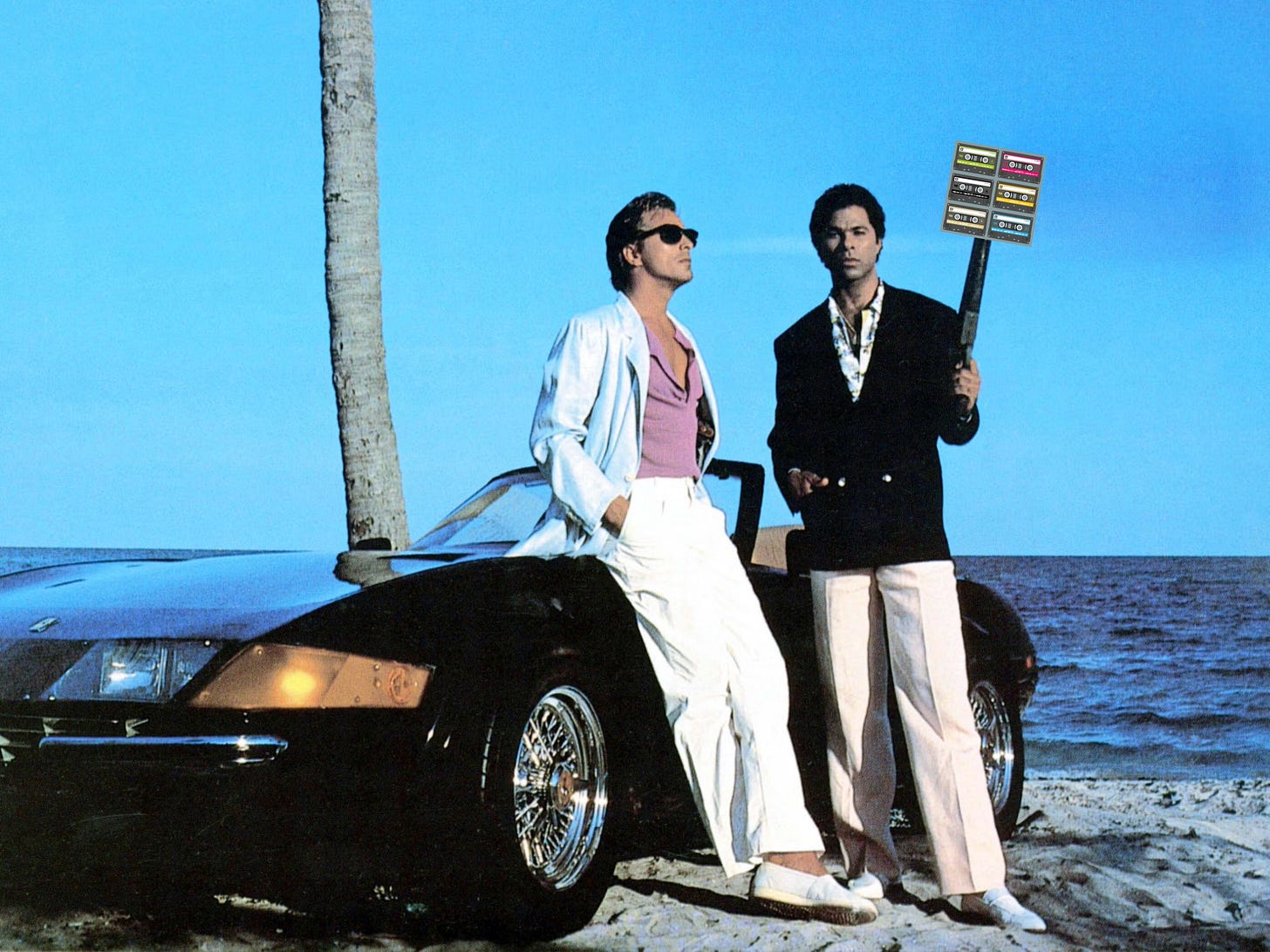
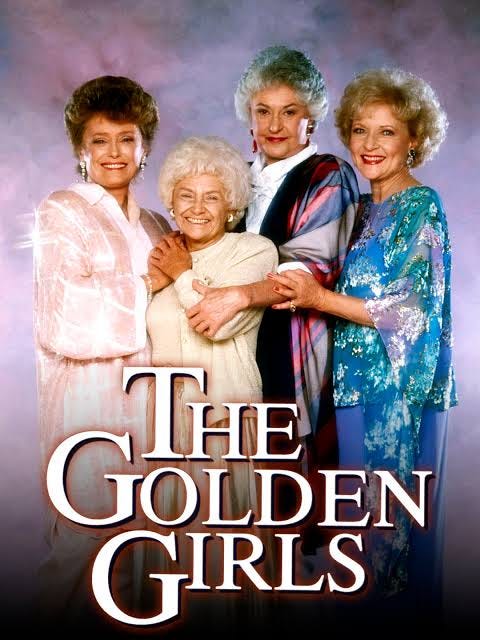


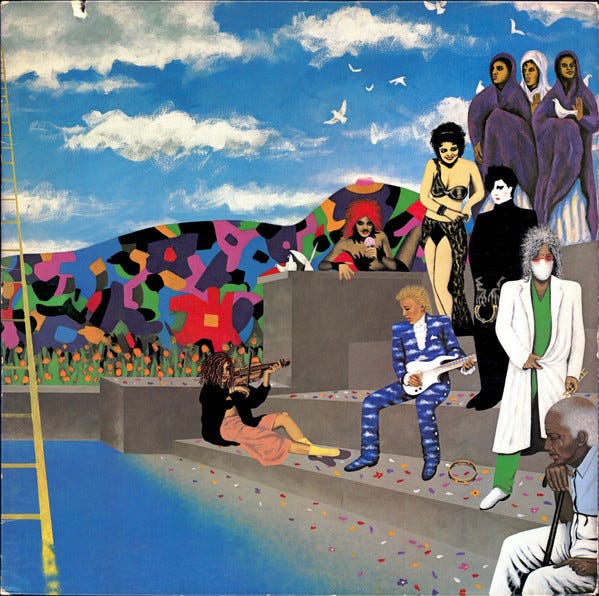
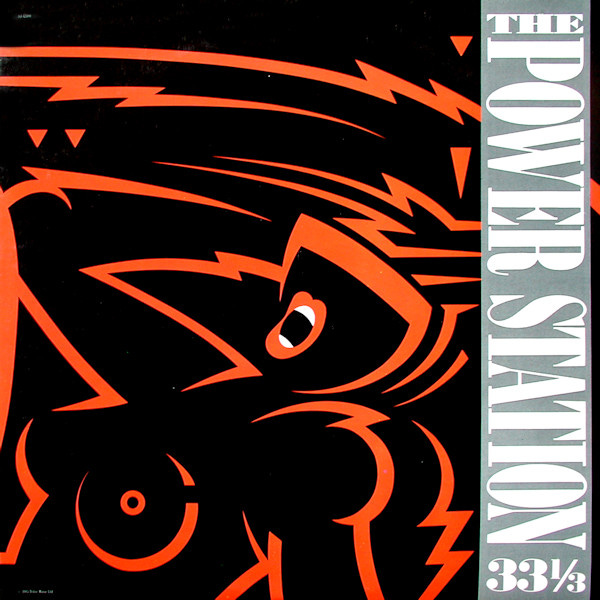
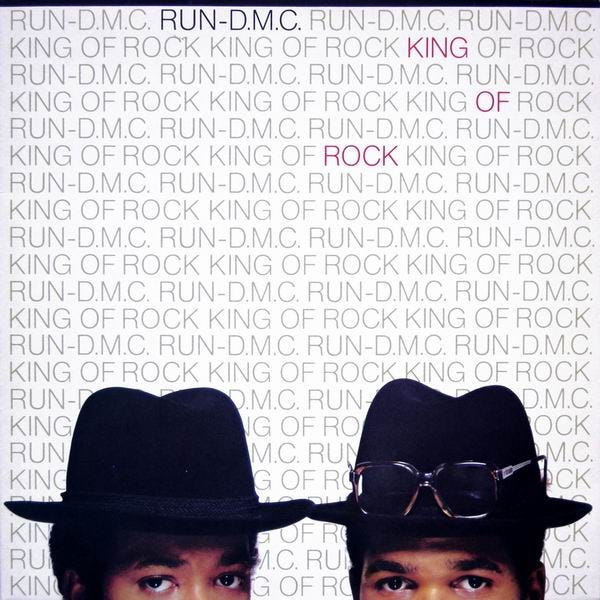
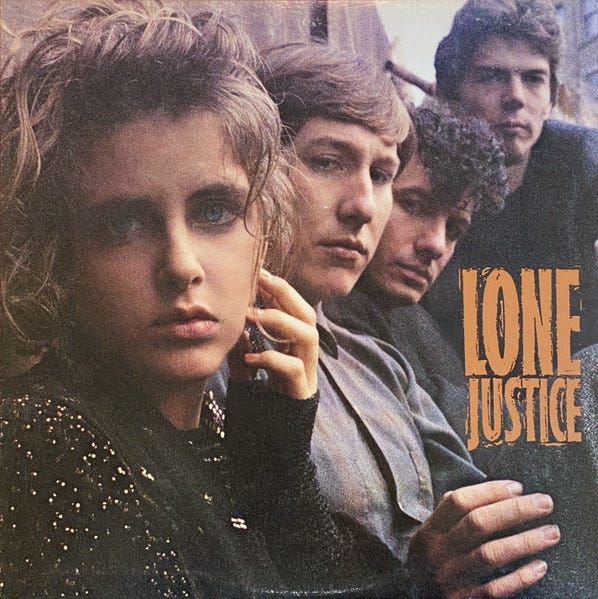
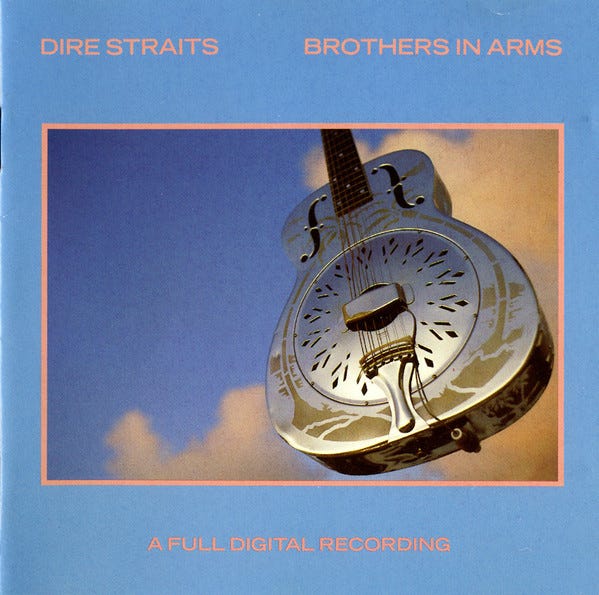

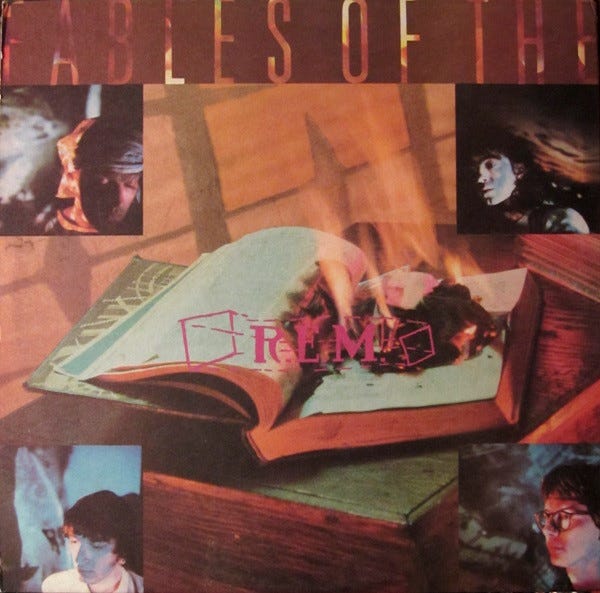
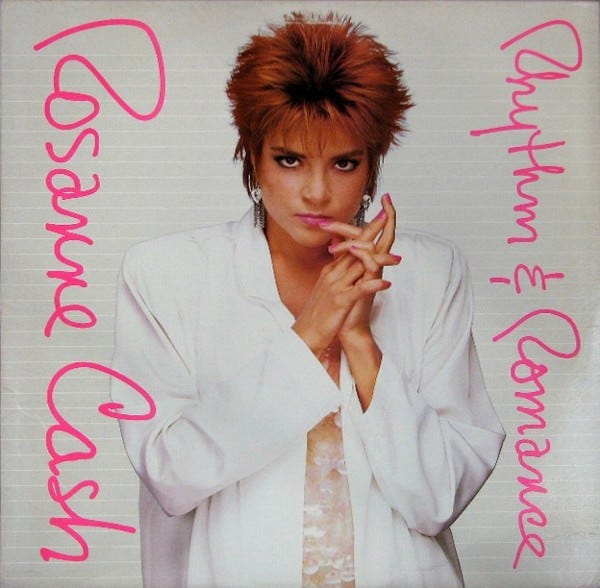
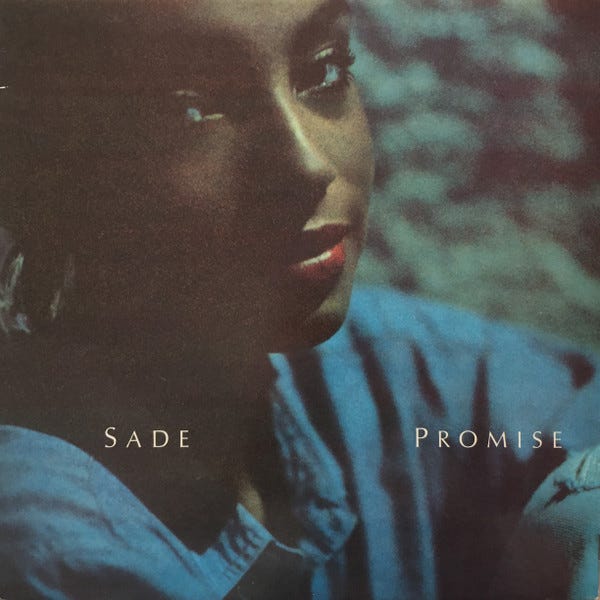
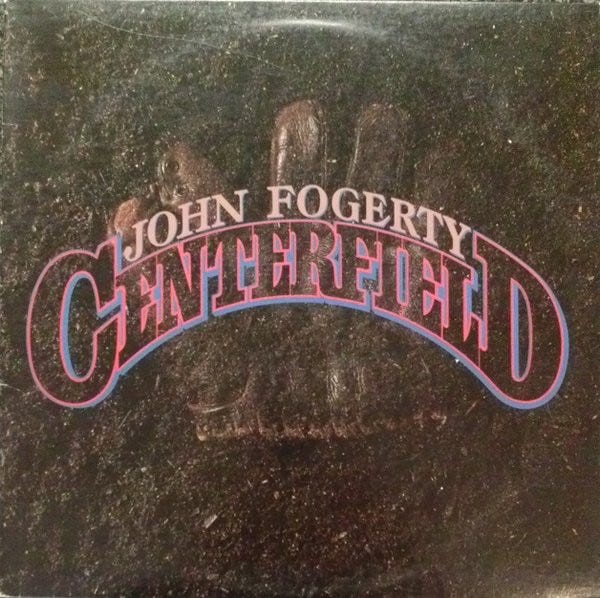
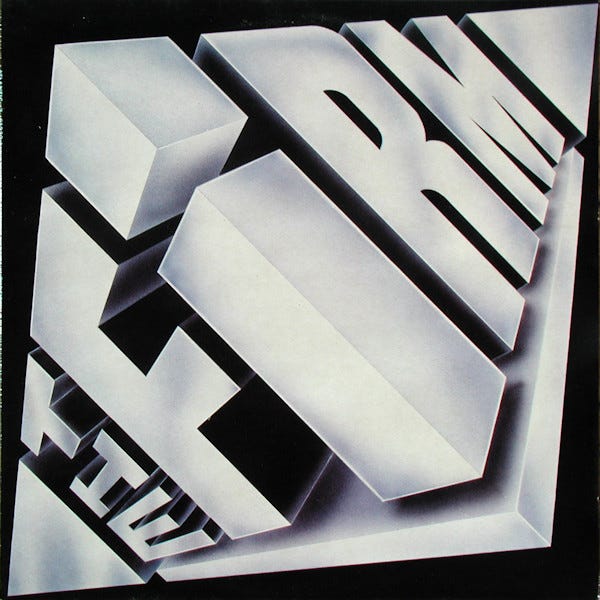
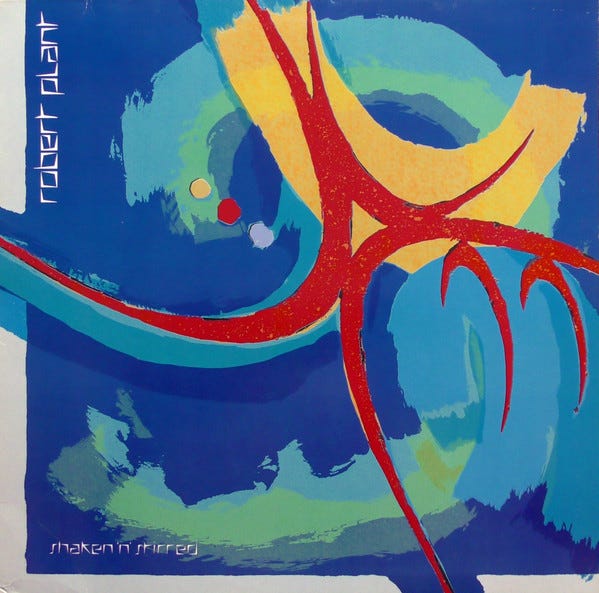
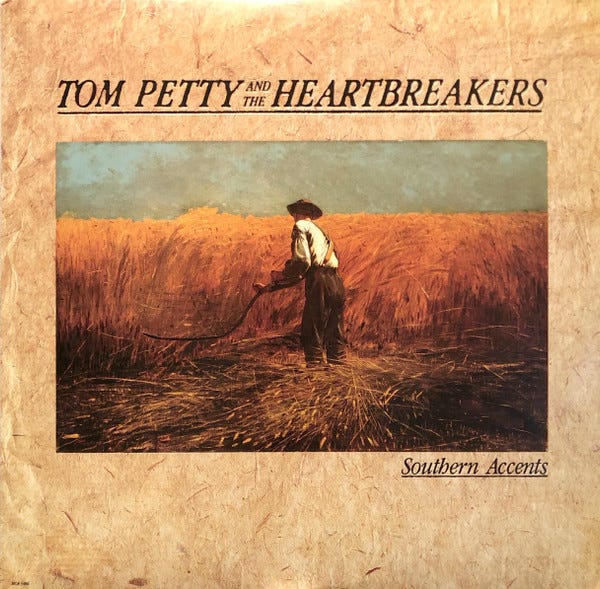
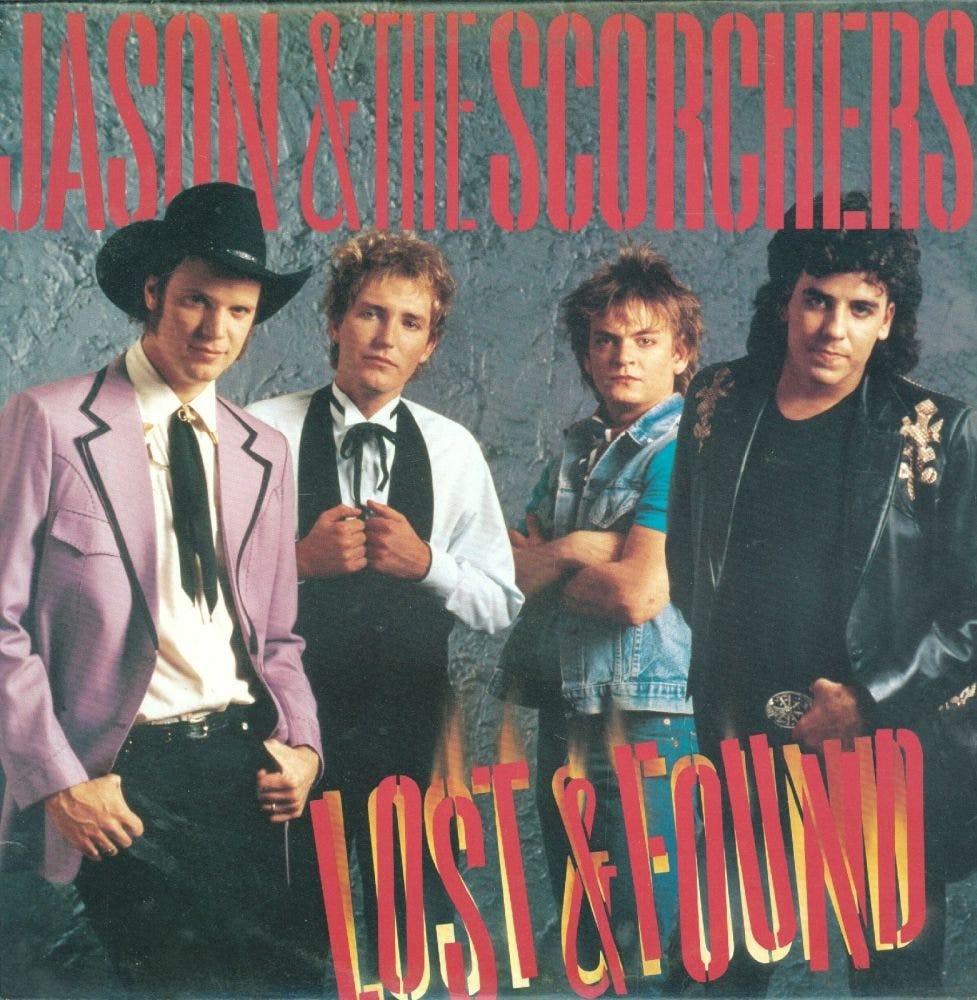
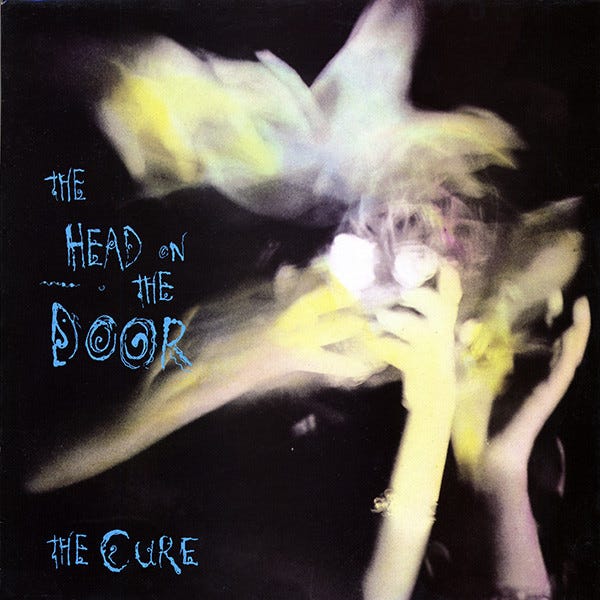
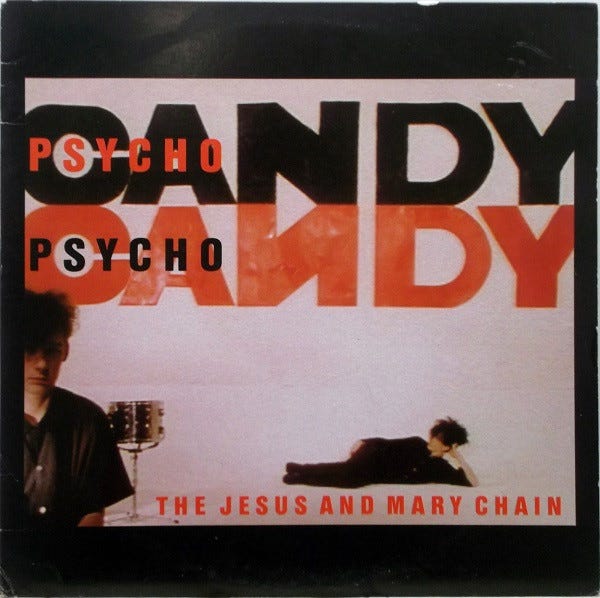
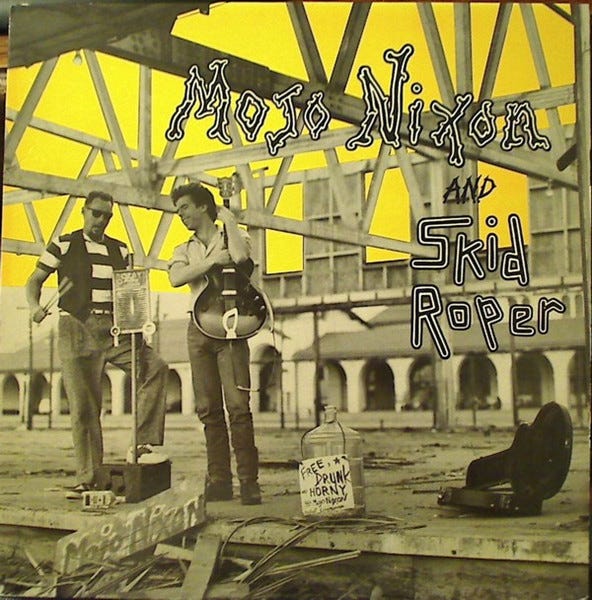

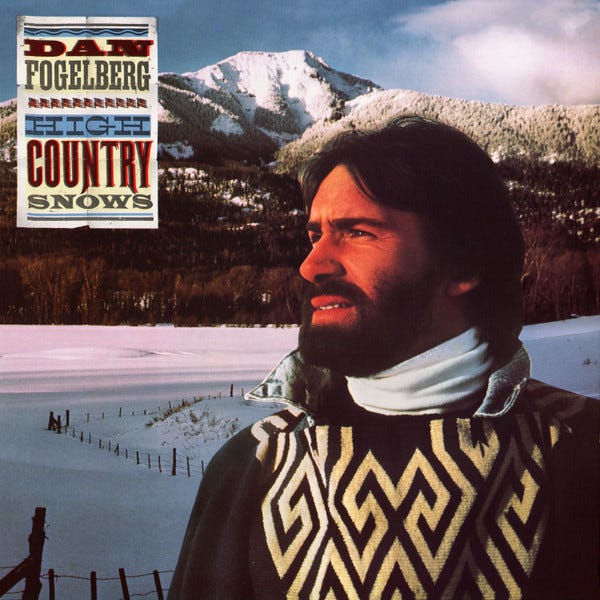
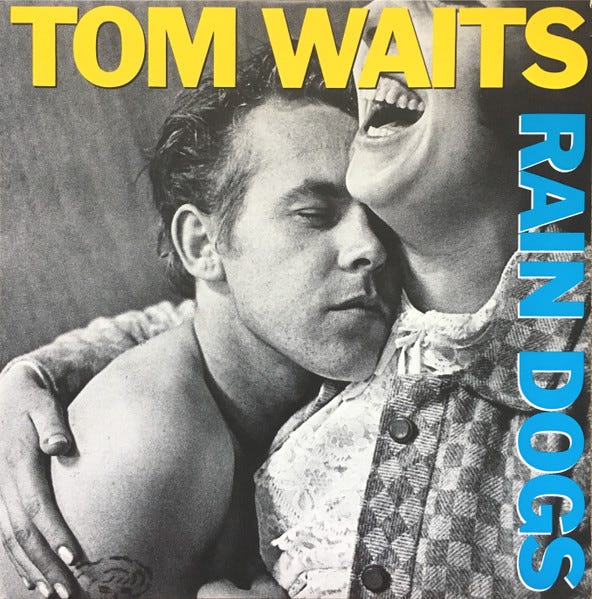
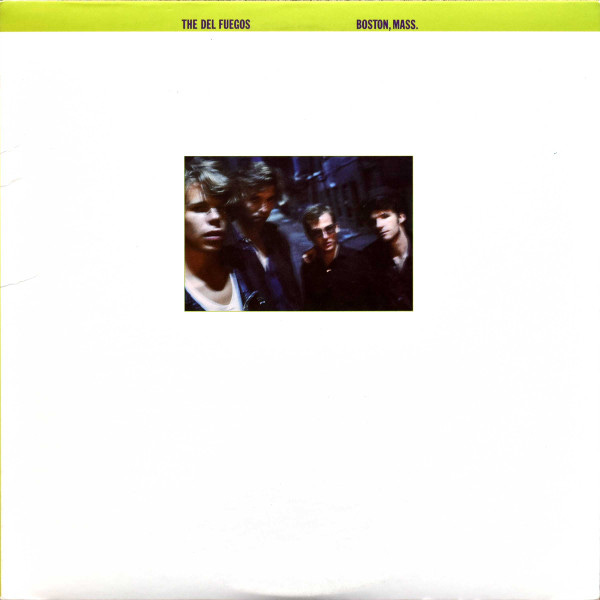
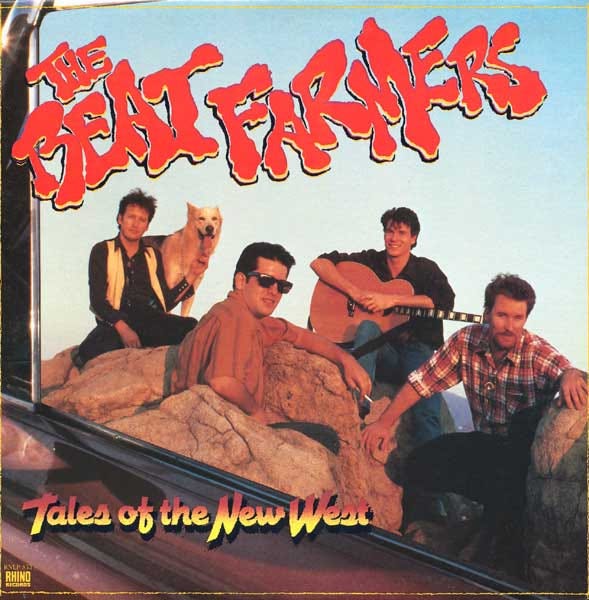
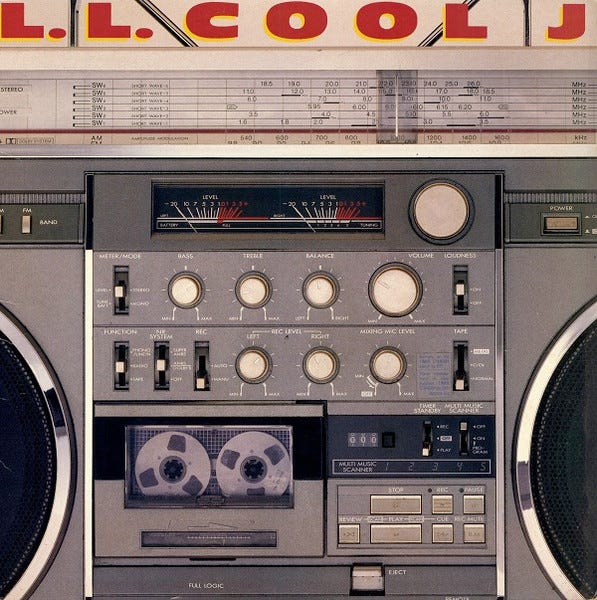
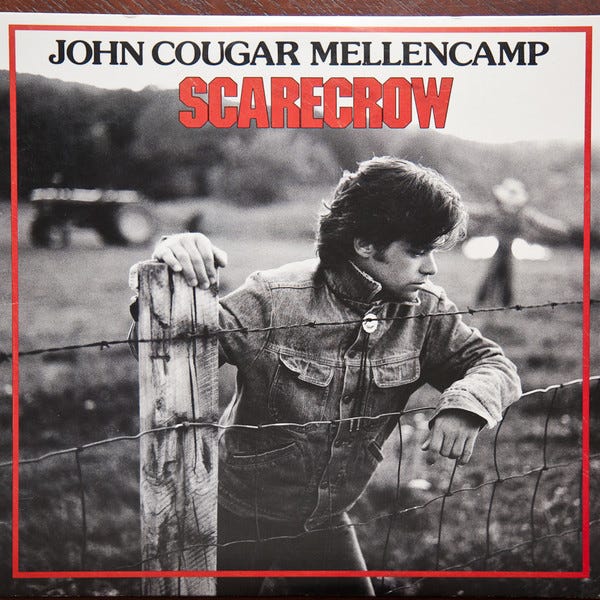

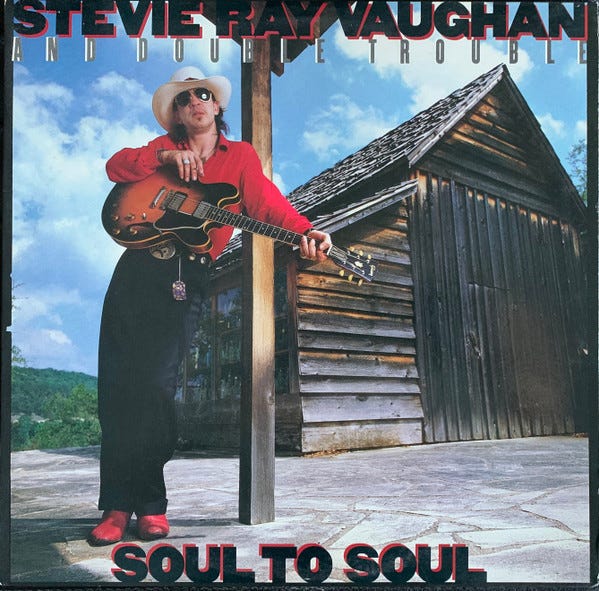
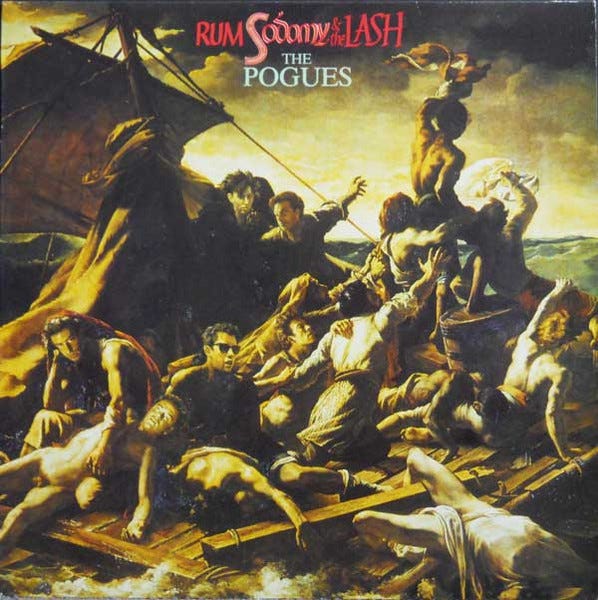
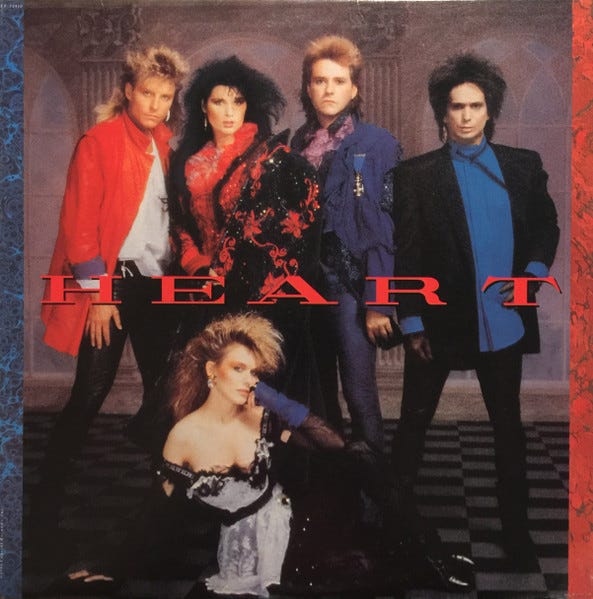
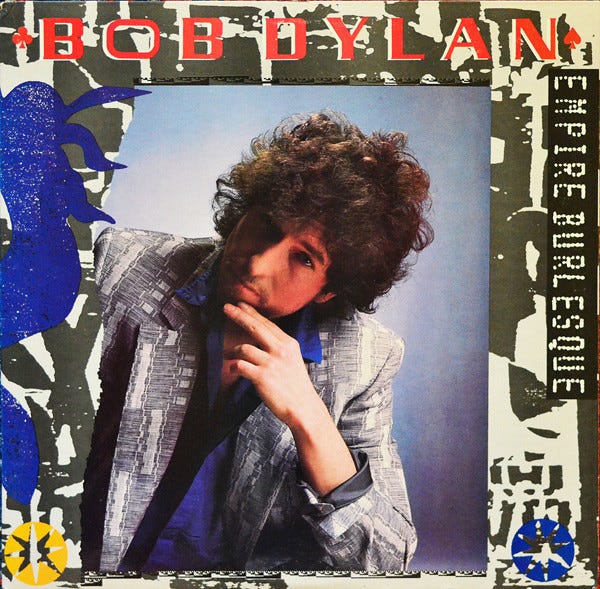
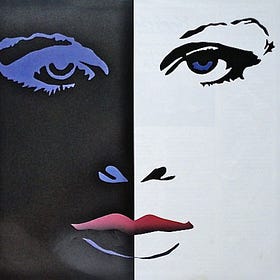

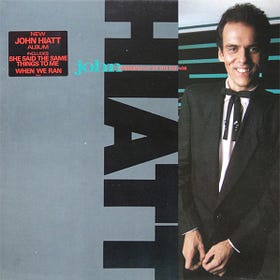

jason and the scorchers. thanks for that! absolutely sweet marie, too.
Wow! That is very thorough, and having (barely) graduated high school in 1985, I really value this. I wonder if there's a FILTHY FIFTEEN playlist already floating around? Otherwise I'll make one... thank you!